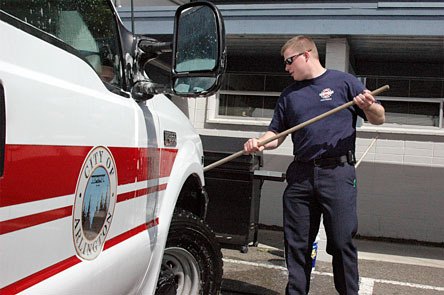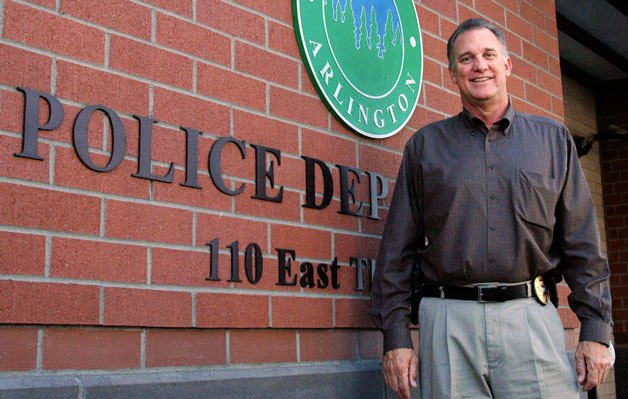ARLINGTON — Dan Hargroves’ workload can be either feast or famine.
But even the slow times keep the Arlington Fire Department paramedic busy.
“We can come to work tomorrow and have an idea of what we’re going to do, but there can be something that I see tomorrow that I’ve never seen,” he said. “It always keeps on your toes.”
When Hargroves isn’t responding to emergency calls, he’s usually cleaning, training or interacting with the community to spread the word about his job duties.
With calls for emergency medical service making up 80 percent of all 911 calls within Arlington, Hargroves and other paramedics and emergency medical technicians stay busy.
The city of Arlington is celebrating National EMS week May 16-22 to honor the service of the men and women who help provide care to those in need under daunting circumstances, said Chris Badger, Arlington Fire Department spokesperson.
“The purpose of EMS week is to celebrate the contributions of our Arlington EMS personnel, both to the life saving and rescue efforts they put forth, and all the other ways they support our community,” Badger said.
Last year the fire department received more than 3,000 calls for service through 911 dispatchers. The city of Arlington has a total of 52 firefighters/emergency medical technicians — of which 10 are paramedics who have a higher level of medical training.
While firefighters/EMTs respond to “BLS calls,” or basic level of service calls, medics respond to more serious situations.
Dispatchers determine which personnel respond to which call.
During a recent shift, Hargroves and fellow paramedic Justin Honsowetz spent some of their afternoon completing routine chores around the downtown Arlington fire station.
Honsowetz, known as “Hons” throughout the station, oiled an axe, and then helped Hargroves wash one of the department’s Ford trucks.
Suddenly, personnel checked their pagers. An 8-year-old Arlington boy’s mother had made a 911 call. The boy, suffering from the flu, was having a hard time breathing — a routine call, said firefighter/EMT Alan Christou.
The call was deemed a “BLS call,” so paramedics remained at the fire station to remain on call for more serious calls.
Christou and Fire Captain Scott Hillis jumped into one of the department’s active fire engines, put on their headsets and flipped on the emergency siren.
About 10 minutes later, fire/EMT personnel were wheeling the boy on a stretcher from his home and into an aide car, which met them on-scene at the boy’s home from Arlington’s 47th Street NE station.
The boy was taken to Cascade Valley Hospital’s emergency room for treatment.
“With these types of calls, we try to be efficient on scene so we can get ready for the next call,” Christou said. “We try to stay under 10 minutes at the scene.”
Many medical calls — basic or more serious — end up at the new hospital, which opened earlier this year.
Doug Schmidt, Arlington Fire Department medical services officer, said the new emergency room has helped speed up the process.
“They can get care a lot faster,” Schmidt said.
Because of the sheer number of trips medics and EMTs make to the emergency room for patients, hospital staff leave them coffee, cookies and other treats for their efforts.
Earlier that same afternoon, Hargroves found himself in that same emergency room area. He took a moment to pour himself a cup of coffee from a pot near the rear emergency exit.
Hons, his partner, filled out a report nearby.
The coffee pot read “EMTs we appreciate you.”
“I didn’t expect cookies — these are nice to have,” Hargroves said.







